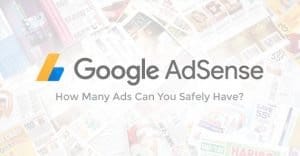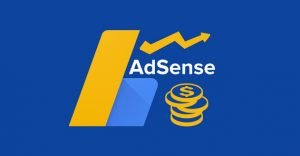10 AdSense Safe Methods of Increasing Your Revenue

Users of AdSense tend to develop a healthy paranoia when implementing changes tot heir site, particularly changes that might affect their eligibility for the program. This is because, if Google blocks or bans you, it can be a nightmare getting yourself back in their good graces. Sometimes it happens; most of the time you end up in limbo, unable to contact anyone of value and unable to get your account unfrozen. You can register another account, but you can be banned out of the blue for having more than one. It’s better to avoid anything that might get you banned.
Yet you still want to increase your revenue. There are dozens of ways you can do it, but some of them are very firmly against the AdSense terms. You don’t want to get caught using a third world clickfarm to boost your earnings, after all. How can you boost your revenue while staying safe with AdSense?
1. Adjust Ad Visibility
Your ads will perform better if they’re more visible. The question you need to ask is, what constitutes more visible or less? The answer may surprise you, but you’ll need to do a little legwork to discover it.
Simple tips are easy to find. Avoid putting your ads below the fold. Avoid hiding your ads, obviously. Post your ads in sidebars rather than breaking up content. All of this is a prelude to some detailed testing.
You’re going to want to locate a heatmap service, like Crazy Egg, and install their plugin. Monitor your traffic and see what parts of your site see the most visibility and clicks. Place your ads near those locations. You might be able to increase the click rate on your ads simply by placing them closer to a frequently-clicked navigation button!
2. Use Larger, Graphical Ads
A picture is worth a thousand words. Depending on your niche, your ads and your traffic, a picture might also be worth a thousand bucks. Use large, graphical ads whenever possible, as long as they’re unobtrusive. You don’t want your page to look overrun with advertising, but neither do you want to try to monetize through small text links.
When a page loads and a person looks at it for the first time, they’re going to be drawn immediately to pictures and headlines. Chances are they’ll gloss over or ignore your navigation, logo and anything above it, unless their attention is specifically drawn there or they’re looking for your navigation intentionally.
If the first thing they see is a reasonably large ad, they’re going to have that impression in mind as they skim the rest of your page. Chances are pretty good they’ll click that ad, simply because it’s larger and more noticeable.
3. Maximize Ad Usage
One common misconception with AdSense is that you’re limited to three ad units on a given page. This comes from a series of threes. First, Google has three types of ad unit. The content, the link and the search unit. Second, if you’re looking up the limits, you might see something like a “limit of 3 standard ad units.” This cements the number three in your mind.
In reality, you can have up to eight ad units per page. This includes three standard units, three links and two search forms.
Implementing more units allows you to diversify the types of ads on your page and place them in additional locations, giving you more impressions and more clicks. You just need to test to make sure the higher ad density isn’t hurting you in terms of SEO and user experience.
4. Sell Ad Space
In addition to AdSense, you can set aside some prime real estate for ad sales directly. The best method to use for this is Google’s DoubleClick for Publishers. It’s a Google-owned ad network, so it’s guaranteed to work with AdSense.
The basic process for this is to set aside ad space and implement the DoubleClick code. Advertisers can then bid on your space and serve ads on your site. It gives you a quick bit of income in addition to what you earn through AdSense. The best part is that, if you link your account with your AdSense account, those ad spaces will show your AdSense ads until such time as an advertiser has bid and won a space.
You’ll want to make sure of a few things before you implement this, however. First, you need to know that the additional ads aren’t interfering with user experience. Second, you’ll want to make sure the businesses buying ads on your site are selling services you approve of. Third, it will take time, particularly if your site is small, to rack up the views and volume necessary to attract the higher paying advertisers.
5. Use Responsive Ad Code
AdSense is dynamic by its very nature, but only in one way; if the system detects that an ad would stretch the user’s window horizontally, it hides that ad. In other words, if your top banner ad is 728 pixels wide, and the user’s browser is 640 wide, the ad won’t show up.
You can work around this problem by implementing dynamic sizing code, just like you would on a responsive website. If a user with a smaller browser visits – and this is common with mobile devices – they will be served a smaller ad unit rather than the full-sized unit or nothing.
6. Move and Rotate Ads
No, this doesn’t mean putting your ads in a marquee or making them shake and rattle around your page. Every few months, you’re going to want to adjust the positioning of your ads. You’ll also want to rotate the content of those ads, if you’re not selling rotating content through DoubleClick.
The reason for this is a sort of ad fatique. In the same way that you, after smelling the same scent for a while, begin to tune it out, web users do the same with ads. The first time they see it, they parse it well. Over time, they start to ignore it. Eventually they might not even pay enough attention to realize your page has ads.
If you tweak the ad positioning or change the content, however, it’s something new. Something new means something novel, and users are attracted to that novelty.
7. Integrate Ads Better
There are a number of ways you can integrate a block of ads with your content. Format them so they appear to be, more or less, part of the rest of your navigation. This is particularly relevant for text ads; you can format them such that they look like a natural extension of your site.
The trick is to keep them still a little different. AdSense requires that your ads be recognizable as ads, which means you can’t make both your site links and your ads 12 point blue bold underlined times new roman. You might want to change the color, add a border or a background to the ads, to make it clear they’re ads.
8. Adjust Keyword Targeting
You’re probably fairly entrenched in your niche, which means it can be difficult to bring yourself to experiment with keywords outside your comfort zone. The idea is to force some experimentation with ads to see if you can find keywords with lower costs per click, higher values per impression or a generally higher return on investment. How you go about this will depend heavily on your niche.
9. Balance Your Template
Some part of every page on your site will be taken up with the same content. Your logo, your top navigation, your sidebar, your social sharing bar, your footer; these are identical from page to page.
Unless your site is already minimalist, chances are you can pare down your template somewhat to increase the ratio of template to original content. More original content gives users more reason to like your page, and thus gives them more chances to view your ads.
10. Add Ads to RSS
Did you know you can add your AdSense ads to your RSS feed? You can plug in an ad on that feed, and give your RSS subscribers a chance to click through to your advertised content. Of course, this only works if you have an RSS feed with subscribers, so get to work.

 ContentPowered.com
ContentPowered.com




